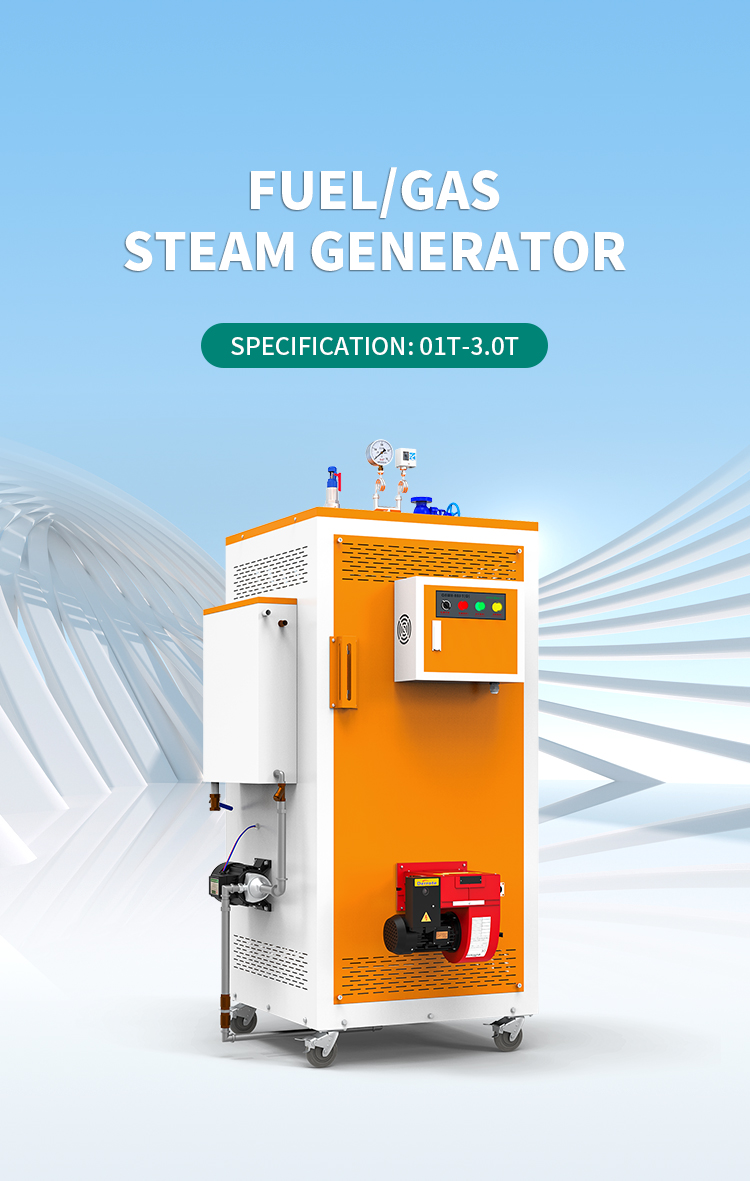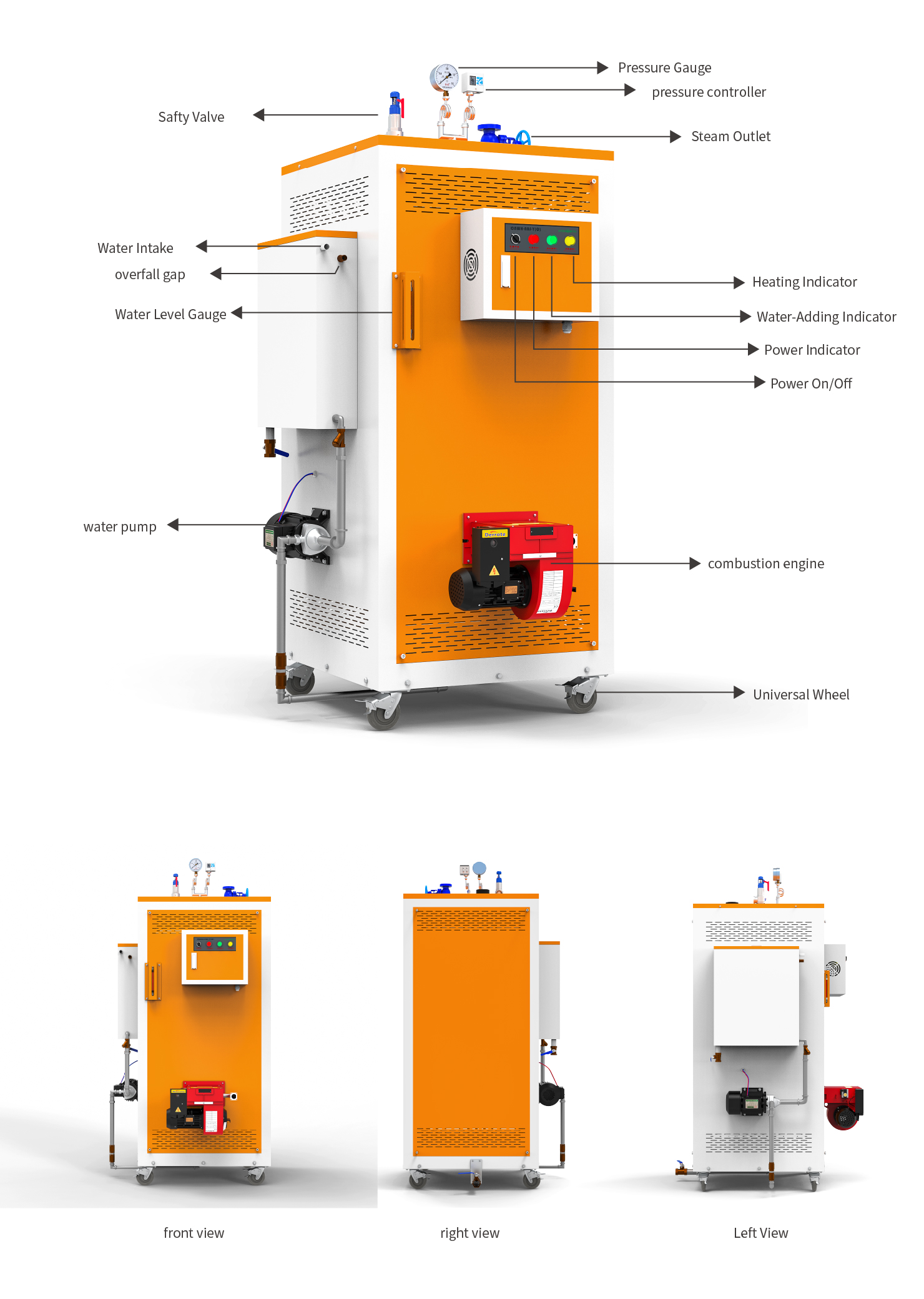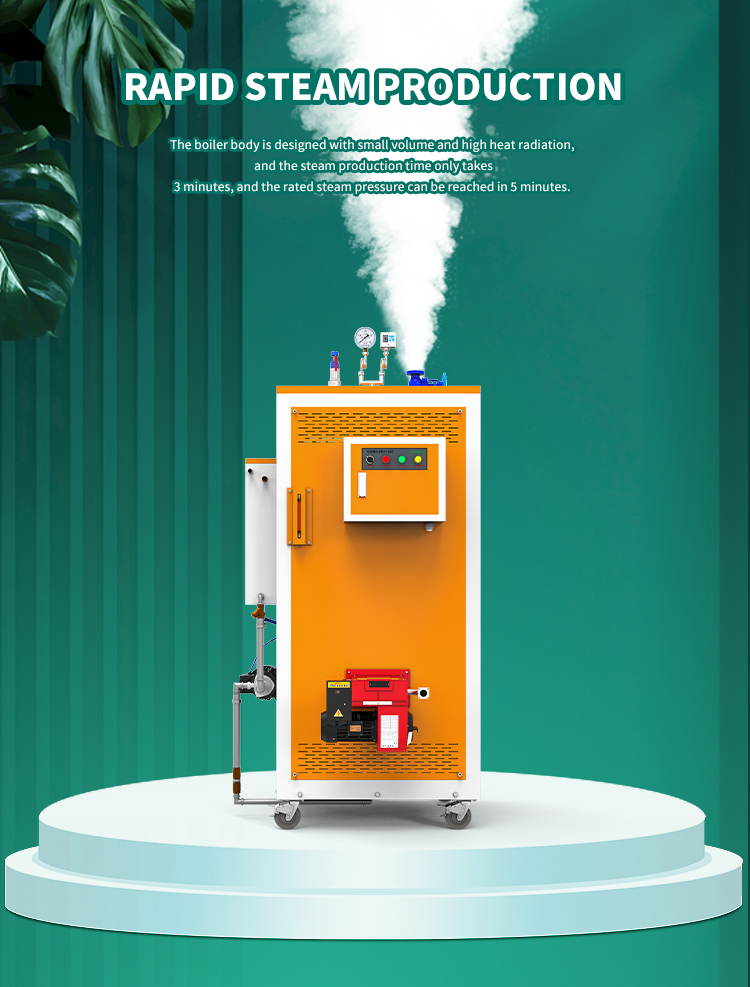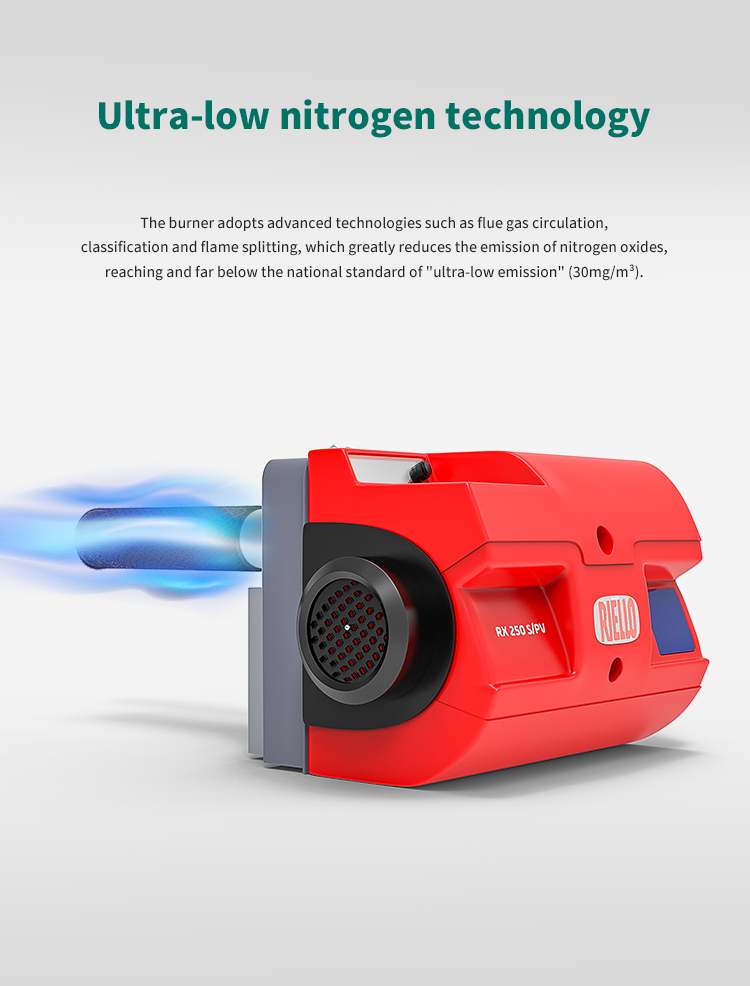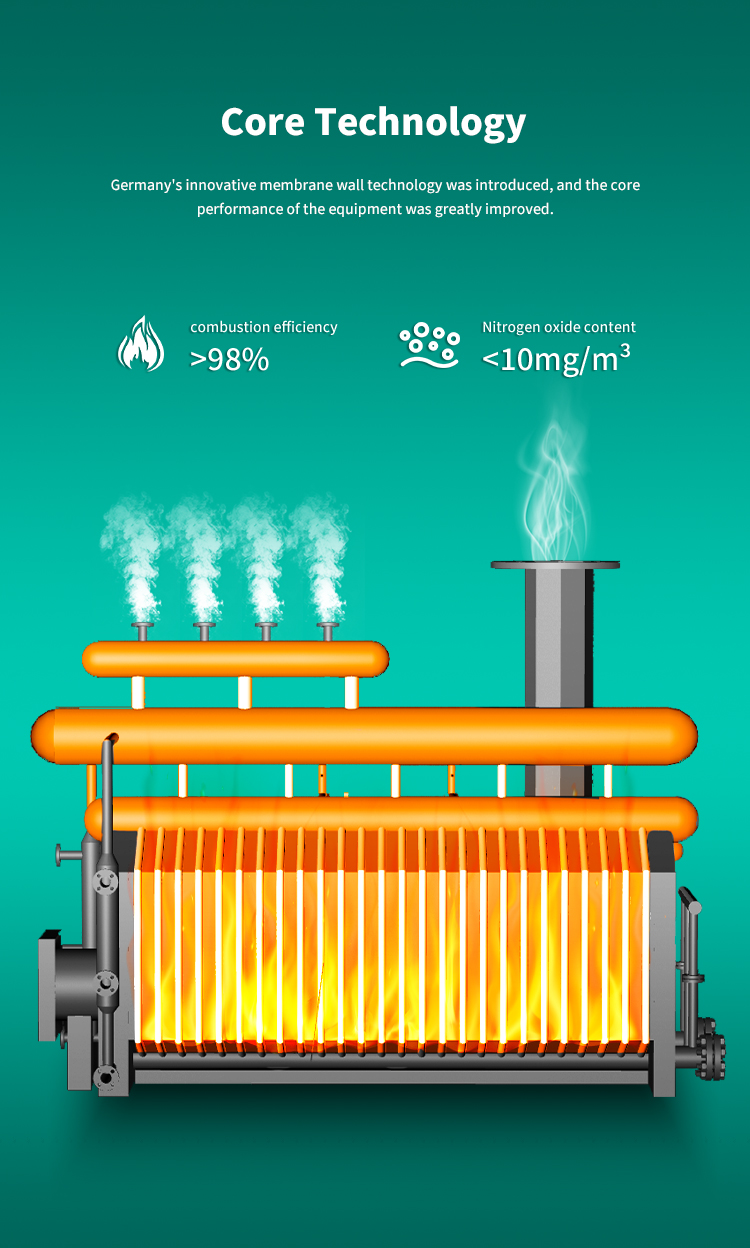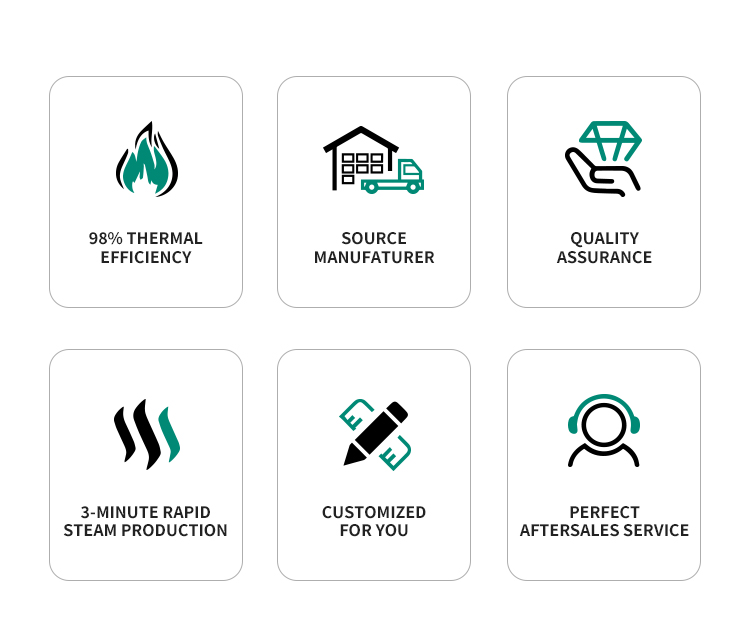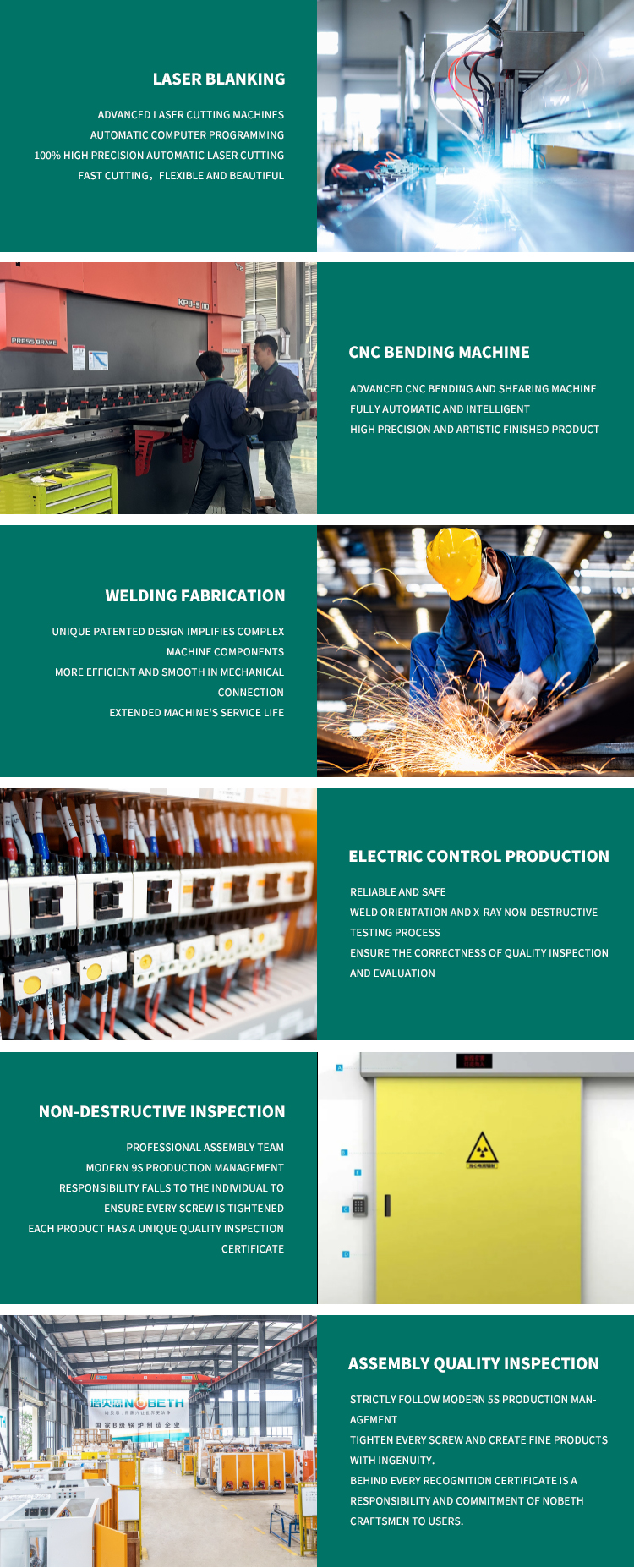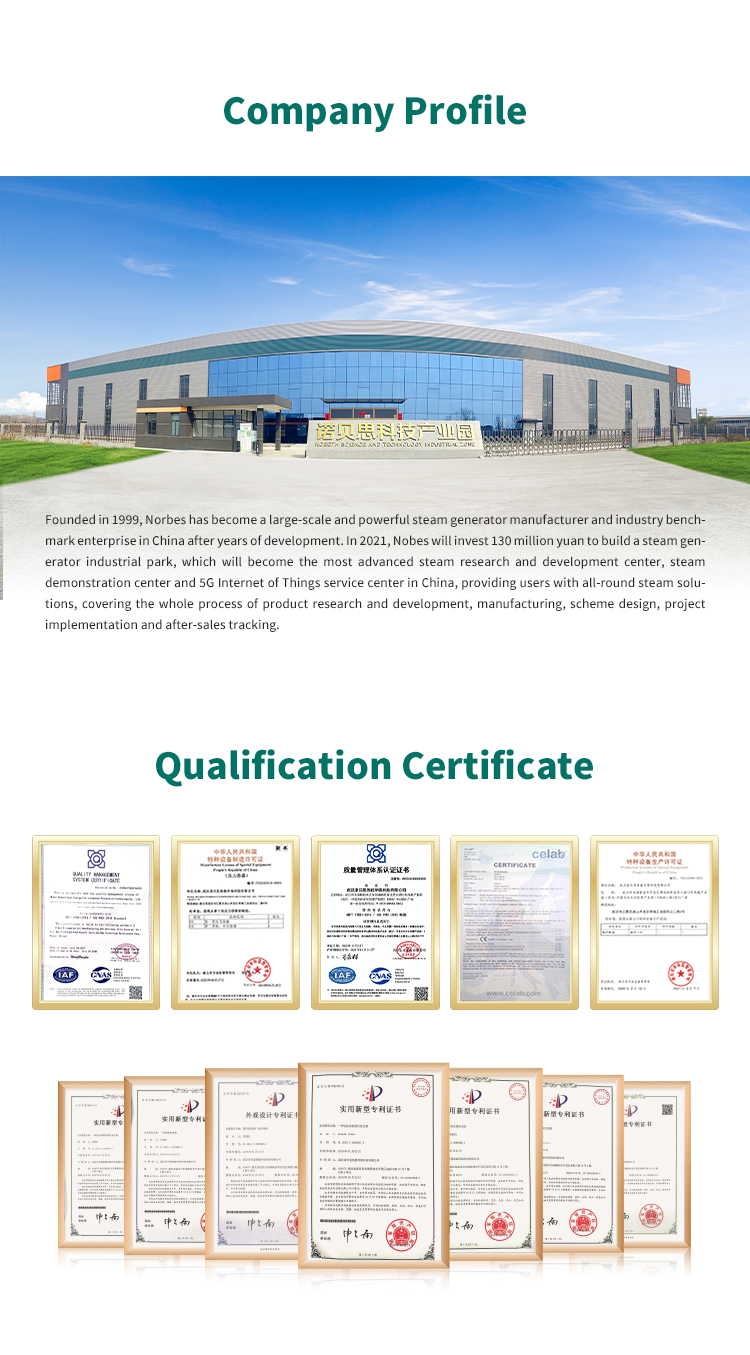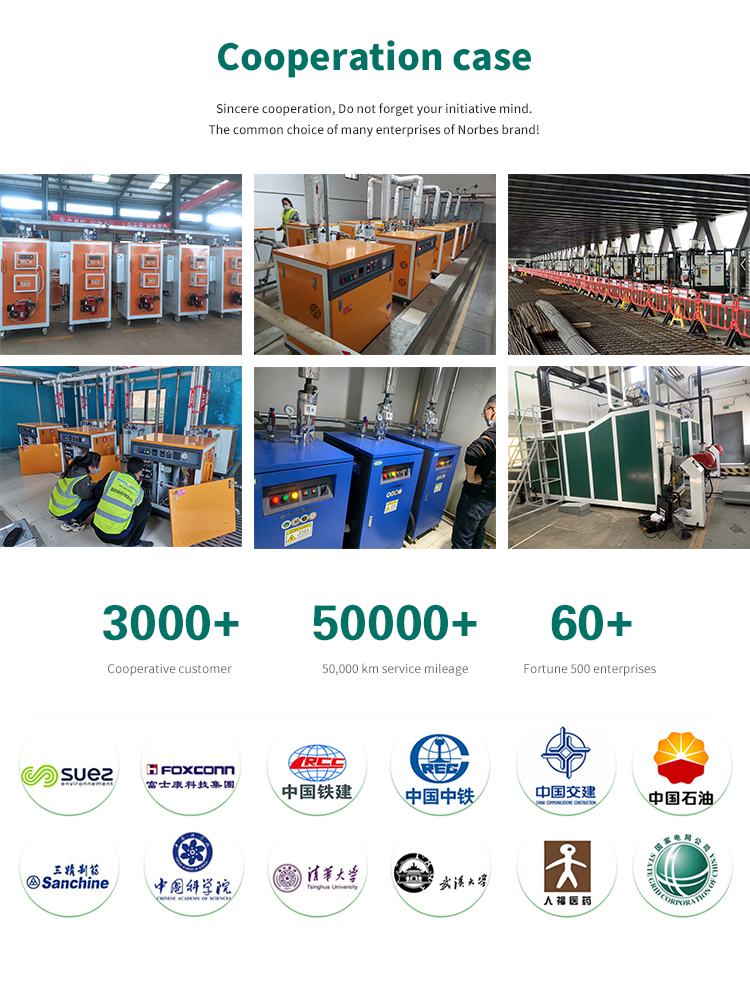
50KG Gas Steam Generator for Cleaner
When the steam generator produces steam, it is discharged from the furnace body of the boiler, and the steam discharged from the boiler always contains a little impurity, some impurities exist in liquid state, some impurities can be dissolved in the steam, and there may also be a small amount of gaseous impurities mixed in In steam, such impurities are usually sodium salts, silicon salts, carbon dioxide and ammonia.
When the steam with impurities passes through the superheater, some impurities may accumulate on the inner wall of the tube, resulting in salt scale, which will increase the temperature of the wall, accelerate the tensile strain of the steel, and even cause cracks in severe cases. The remaining impurities enter the steam turbine of the boiler with the steam. The steam expands and works in the steam turbine. Due to the drop of steam pressure, impurities are precipitated and accumulated in the flow part of the steam turbine, resulting in rough surface of the blade, adjustment of line shape and reduction of steam flow section, resulting in a decrease in output and efficiency of the steam turbine.
In addition, the salt content accumulated in the main steam valve will make it difficult to open the valve and close it laxly. As for the production steam and the product are in direct contact, if the impurity contained in the steam is greater than the specified value, it will affect the product quality and process conditions. Therefore, the quality of the steam sent by the steam generator should meet the standard technical standards, and the purification of boiler steam has become very important, so the boiler steam of the steam generator must be treated with steam purification.
Products categories
-

E-mail
-

Phone
-

WhatsApp
-

Top


